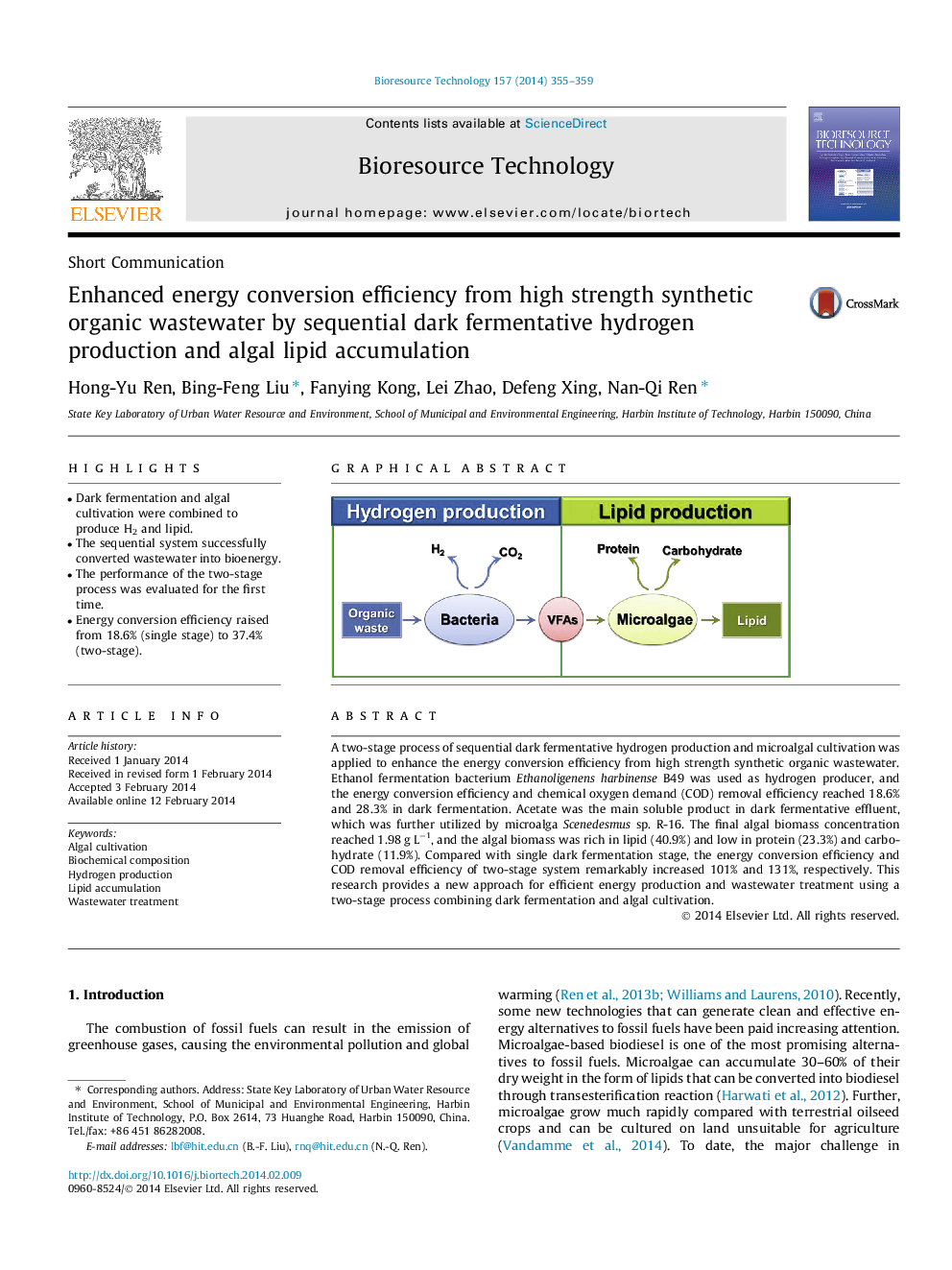| Article ID | Journal | Published Year | Pages | File Type |
|---|---|---|---|---|
| 680948 | Bioresource Technology | 2014 | 5 Pages |
•Dark fermentation and algal cultivation were combined to produce H2 and lipid.•The sequential system successfully converted wastewater into bioenergy.•The performance of the two-stage process was evaluated for the first time.•Energy conversion efficiency raised from 18.6% (single stage) to 37.4% (two-stage).
A two-stage process of sequential dark fermentative hydrogen production and microalgal cultivation was applied to enhance the energy conversion efficiency from high strength synthetic organic wastewater. Ethanol fermentation bacterium Ethanoligenens harbinense B49 was used as hydrogen producer, and the energy conversion efficiency and chemical oxygen demand (COD) removal efficiency reached 18.6% and 28.3% in dark fermentation. Acetate was the main soluble product in dark fermentative effluent, which was further utilized by microalga Scenedesmus sp. R-16. The final algal biomass concentration reached 1.98 g L−1, and the algal biomass was rich in lipid (40.9%) and low in protein (23.3%) and carbohydrate (11.9%). Compared with single dark fermentation stage, the energy conversion efficiency and COD removal efficiency of two-stage system remarkably increased 101% and 131%, respectively. This research provides a new approach for efficient energy production and wastewater treatment using a two-stage process combining dark fermentation and algal cultivation.
Graphical abstractFigure optionsDownload full-size imageDownload as PowerPoint slide
